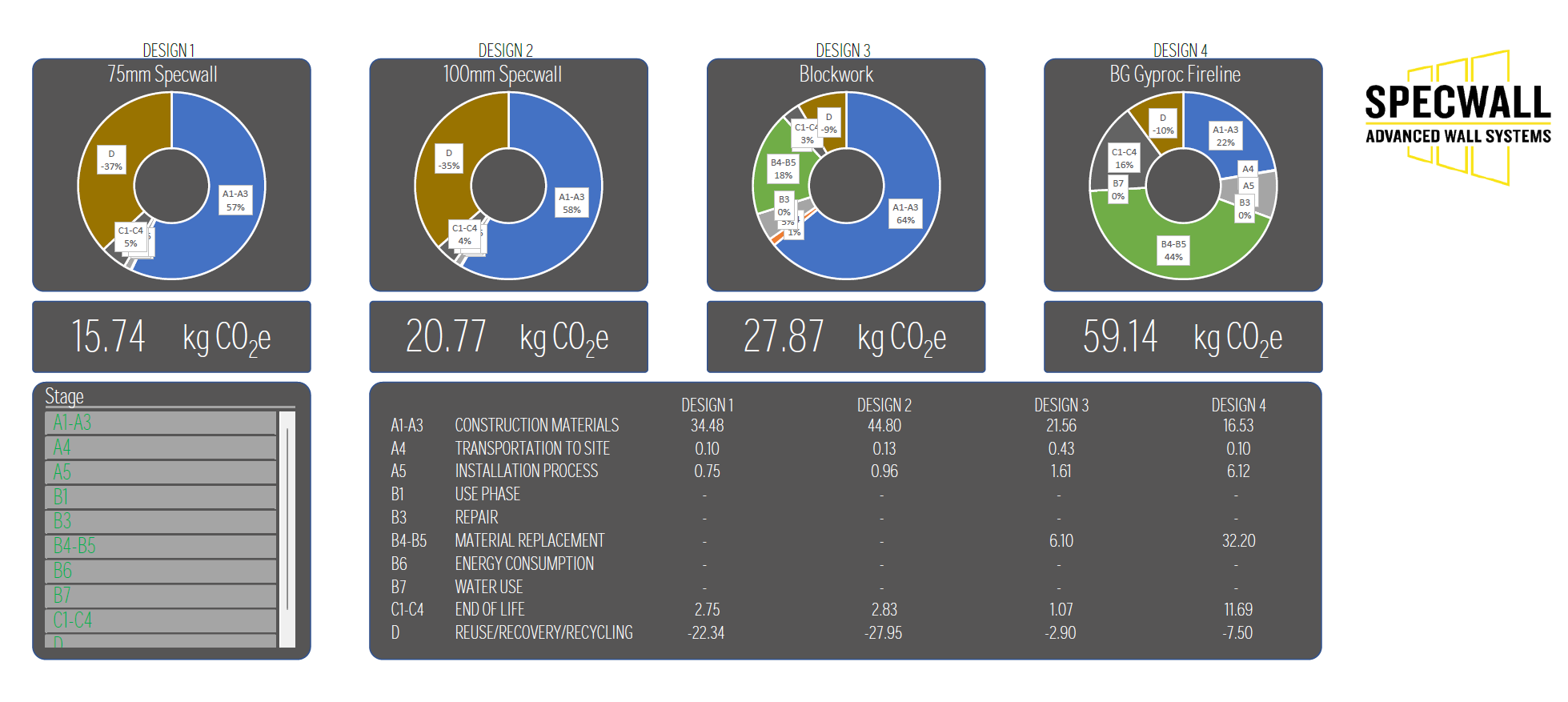We are pleased to announce that the Environmental Product Declaration has been completed for our A2-rated wall panel in both 75mm and 100mm thicknesses.
Choosing environmentally friendly products has never been more important. Our EPD allows you to specify Specwall with the confidence that it will increase the sustainability of your project now and far into the future.
What is an Environmental Product Declaration (EPD)?
An Environmental Product Declaration (EPD) is a document which demonstrates the environmental performance of a product in quantifiable terms. It is classed as a Type III environmental label, and meets the European Standard EN 15804.
An EPD is generated based on a Life Cycle Assessment (LCA) which is undertaken in lined with EN 15804, ISO 14025 and other standards. This LCA analyses the potential environmental impact of a product at every stage of its life, from the initial production through to its end-of-life phases.
It is a full, complex accounting of how sustainable a product is and can be considered the gold standard in this area. With that in mind, a product’s EPD should be viewed as the first port of call when trying to specify the most sustainable construction products.
Why is an EPD important?
All construction products and materials need to declare modules A1-A3, C1-C4 and D in their EPD to meet Building Regulations.
Module D covers a product’s reuse, recovery and recycling potential and many products do not include it in their EPD calculations, despite it being a requirement of the new Building Regulations. Due to this, products without an EPD including Module D are creating additional work for many people in the field.
Specwall, however, does include Module D and that makes it an extremely valuable product for architects, developers, specifiers and other interested parties to be aware of.
By including the calculations for the loads and benefits of end-of-use recycling (Module D), Specwall’s LCA is more complete and more complex, allowing for greater understanding of its sustainability and a greater degree of confidence in the product when compared to alternatives.
How does Specwall perform in its EPD?
Our A2 panel which has received its EPD performs extremely strongly in this area in the following ways:
- Panel can be removed and reused in a different location at the end of the building lifetime (30 years assumed as standard).
- 50% of panels reused without any changes by cutting down the middle, re-forming grooves and reinstalling.
- 38% of panels recycled and used as aggregate.
- 10% returned to Specwall for use as samples.
- Only 2% sent to landfill.
Choosing products which have sustainability embedded into their whole lifecycles is vital for architects, and Specwall offers a superb alternative to plasterboard, blockwork and SFS systems that are not as sustainable. We are verified on the OneClick comparison portal which is used by many architects and specifiers for their BREEAM calculations, and also to compare construction products directly. Click here to see the portal for more information.
The comparison between Specwall and other products is as follows:

From this OneClick comparison, we can see the following carbon emissions over a product’s lifetime:
- 75mm Specwall A2 panel – 15.74 kgCO2e
- 100mm Specwall A2 panel – 20.77 kgCO2e
- Blockwork – 27.87 kgCO2e
- BG Gyproc Fireline – 59.14 kgCO2e
Our EPD is also on the Green Book Live and you can download it today by clicking here. If you want to learn more about the process of verification, you can learn more about how the BRE tested and commissioned our system by clicking here.
To find out anything else about Specwall or to get a quote for your project, get in touch with our technical team today and request our EPD by clicking here.



